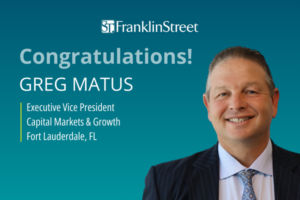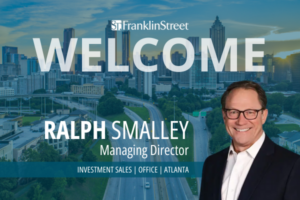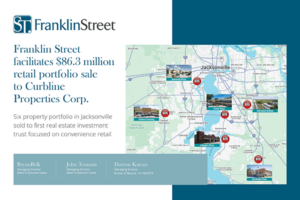Florida is gliding into another smooth year for apartment and condominium development and sales, lifted by an improving U.S. economy, increased foreign investment and aggressive lending. Miami, Tampa and Orlando continue to be the hottest markets for apartments, and South Florida leads the way in condominium sales and construction.
Debt and equity sources, along with wealthy individuals, actively continue to seek deals for individual units and entire projects. Increased competition is pushing down yields, especially in Miami due to a rising number of foreign investors. That is shifting some investment dollars to other Florida metro markets.
Apartment community and condominium prices should continue to rise this year, especially for in-fill projects that offer urban advantages such as being within walking distance of work, shopping and entertainment. The hottest spots include Brickell Avenue in Miami, Channelside in Tampa, and downtown Orlando. In Brickell, Miami’s financial district, Swire Properties is developing Brickell CityCentre, a billion-dollar, mixed-used project that will feature 800 condominium residences and 93 apartments in three towers, plus offices, stores and a hotel.
Just blocks away, The Related Group plans another billion-dollar project called One Brickell with three towers reaching as high as 80 stories. Long-term plans call for more than 1,200 condominiums, offices, a hotel, and stores at street level.
The condominium market has moved from recovery to boom in Miami, where the number of foreclosures dropped 23 percent last year, according to CondoVultures.com. Demand is so strong that developers changed a 34-story, 390-unit project now under construction from a rental to a condominium tower. And a mind-boggling 25,000 condos are planned for South Florida, just seven years after the condo crash began.
Wealthy Argentinians and Venezuelans continue to fuel demand as they respond to instability at home by moving capital into condominium and apartment projects through individual purchases and participation in investment syndicates. They see the properties as a safe haven from unpredictable political and economic conditions in their countries.
They are buying all types of real estate, but prefer residential projects because they better understand housing than U.S. retail or office properties. Similarly, they perceive that condominiums and apartments are easier to manage and pose less risk than commercial properties. A third consideration is arbitrage if their home currency is still strong.
Brazilians, already active condominium buyers in Miami, may represent the next wave of investors in apartment properties in metro areas. Their country had been riding an economic boom, but slower growth, tight labor markets and other factors are leading wealthy individuals to buy into existing and planned projects in Florida.
U.S. investors are being spurred by easier credit. Competition among lenders has pushed some to offer non-recourse financing on apartment projects; that credit term was unheard of during the last down cycle. Multifamily lending was dominated by Fannie Mae and Freddie Mac over the last five years for larger projects. Life insurance companies stayed in the background and traditional lenders were active in the distress world and for the local mom-and-pop investors.
Securitization, which was unheard of since the crash, is starting to come back, as are life insurance companies. Many balance-sheet lenders are starting to ramp up non-recourse debt options. The combination of those lending sources is having a dramatic impact on values today.
Securitization, which was unheard of since the crash, is starting to come back, as are life insurance companies. Many balance-sheet lenders are starting to ramp up non-recourse debt options. The combination of those lending sources is having a dramatic impact on values today.
Owners of condominiums and apartments should have little trouble filling units this year. Falling unemployment and steady migration to Florida are putting more people in the market, Apartment complexes are also benefiting from a consumer preference for renting over owning and from credit requirements that make it difficult to finance a single-family home.
Demand for apartments was evident in 2013. Leasing activity in downtown Miami and surrounding neighborhoods jumped 12 percent, with nearly 6,000 new contracts signed, according to CondoVultures.com. Rental rates rose to a record $2.15 per square foot, up 17 cents a foot from 2012 levels.
Asking rents are trending higher in other markets: up 4.9 percent annually in Orlando, 3.9 percent in Tampa, and 3.8 percent in Jacksonville, according to ALN Apartment Data. Occupancy rates in all those markets stayed above 90 percent in the third quarter of last year.
There are no signs that rents will fall, but raising them will depend largely on conditions in a particular sub-market. Developers of new units in hip, urban locations will have little trouble commanding top rents. But buyers of older buildings will have to upgrade their properties with amenities such as cabanas around refurbished pools, newly remodeled interiors and valet trash pick-up in order to justify higher asking rents.
Condominium projects face less headway in South Florida, where the market skews toward luxury and ultra-luxury projects. In Orlando, the median price of an existing condominium rose almost 17 percent in 2013, according to Equitable National Title Group. Other markets are also recovering; for example, the 32-story Oasis in Fort Myers went into foreclosure in 2010; as of late January, only 37 units remained.
A thirst for existing properties is spurring apartment construction, which hit an 11-year peak in Tampa in the third quarter of 2013, with 5,946 units being built. Of those, 4,720 will be completed this year, according to MPF Research. Florida’s Panhandle is also attracting developers because of the region’s growing reputation as a nice place to live.
Condominium construction is following the same wave. South Florida is booming, with 184 towers planned. Dirt is being shoveled in urban areas of other metro regions.
What could go wrong? A sudden interest-rate jump of 2 to 4 percentage points would bring the market to a halt. Most apartment property loans are five to seven years, and about 10 percent of them come due each year. Investors would find it very difficult to stay afloat, domestic condominium buyers would have difficulty qualifying for mortgages, and foreign investors would suffer from currency depreciation. Fortunately, the Federal Reserve has not indicated that it foresees a need to hike rates. A gentle winding down of its quantitative easing policy would keep the markets healthy.
Another danger is a global event that rocks the capital markets and brakes the U.S. economy. The housing market could manage an economic meltdown in one foreign country, because domestic investors would fill the gap.
Beyond this year, the question becomes when local markets are overbuilt. How many condos or apartments is too many? Lenders like to lend, and builders like to build. When both become hyperactive, which appears to be the path we are heading down just as in 2008, then we will find out again. That’s the up-and-down nature of real estate cycles.
With career closings exceeding $1.5 billion, Darron Kattan, Franklin Street Managing Director and a multifamily brokerage specialist, focuses on properties in Central, West Central, and Southwest Florida. Deme Mekras is Regional Managing Partner for Franklin Street Real Estate Services specializing in multifamily brokerage throughout South Florida. With more than 10 years of experience in the South Florida market and career closings surpassing $300 million in 2013, he has a wealth of knowledge to provide his clients as they navigate buying, selling, and financing investment real estate. Download PDF



